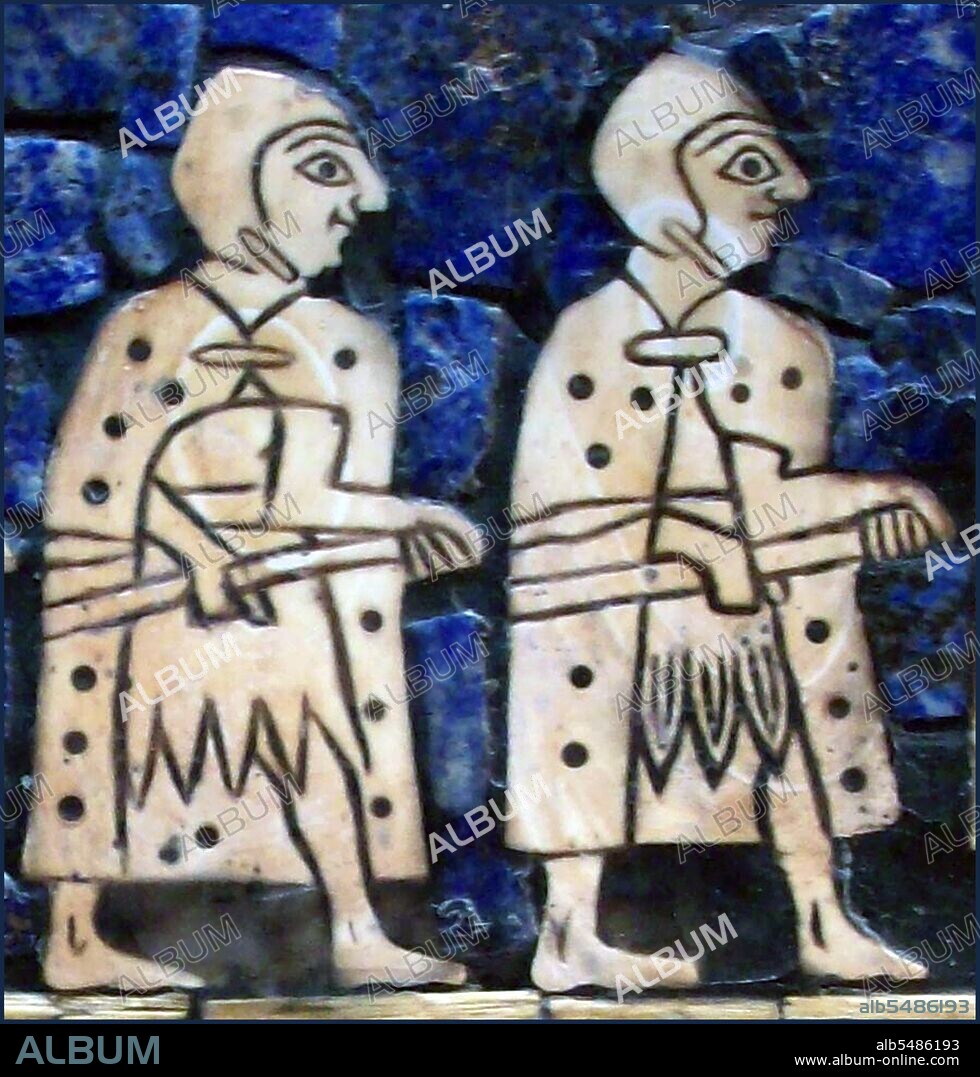alb5486193
Iraq: The Standard of Ur (also known as the 'Battle Standard of Ur', or the 'Royal Standard of Ur') is a Sumerian artifact excavated from the Royal Cemetery in the ancient city of Ur, located in modern-day Iraq to the south of Baghdad (c.2250 BCE)-detail, two Sumerian soldiers

|
Ajouter à une autre Lightbox |
|
Ajouter à une autre Lightbox |



Avez-vous déjà un compte? S'identifier
Vous n'avez pas de compte ? S'inscrire
Acheter cette image

Titre:
Iraq: The Standard of Ur (also known as the 'Battle Standard of Ur', or the 'Royal Standard of Ur') is a Sumerian artifact excavated from the Royal Cemetery in the ancient city of Ur, located in modern-day Iraq to the south of Baghdad (c.2250 BCE)-detail, two Sumerian soldiers
Légende:
Voir la traduction automatique
The Standard of Ur survived in only a fragmentary condition, as the effects of time over the last several millennia had decayed the wooden frame and bitumen glue which had cemented the mosaic in place. The weight of the soil had crushed the object, fragmenting it and breaking the end panels. The present form of the artifact is a reconstruction, presenting a best guess of its original appearance. It has been reconstructed as a hollow wooden box measuring 21. 59 centimetres (8. 50 in) wide by 49. 53 centimetres (19. 50 in) long, inlaid with a mosaic of shell, red limestone and lapis lazuli. The box has an irregular shape with end pieces in the shape of truncated triangles, making it wider at the bottom than at the top. Inlaid mosaic panels cover each long side of the Standard. Each presents a series of scenes displayed in three registers, upper, middle and bottom. The two mosaics have been dubbed 'War' and 'Peace' for their subject matter, respectively a representation of a military campaign and scenes from a banquet. The panels at each end originally showed fantastical animals but they suffered significant damage while buried, though they have since been restored.
Crédit:
Album / Pictures From History/Universal Images Group
Autorisations:
Modèle: Non - Propriété: Non
Questions sur les droits?
Questions sur les droits?
Taille de l'image:
4050 x 4231 px | 49.0 MB
Taille d'impression:
34.3 x 35.8 cm | 13.5 x 14.1 in (300 dpi)
Mots clés:
ANT. OR.: IRAK • ANT. OR.: MESOPOTAMIE • ANTIQUITE • ANTIQUITÉS • ART (CATÉGORIE) • ART • ART, MOSAIQUE • ASIE • ASIE, CONTINENT • CONTINENT ASIE • HISOIRE • HISTOIRE • IRAK • IRAK, ANT. OR. • MESOPOTAMIAN • MÉSOPOTAMIE • MESOPOTAMIE, ANT. OR. • MOSAIQUE • MOSAÏQUES • NACRE • SHELL • SUMERIAN
 Pinterest
Pinterest Twitter
Twitter Facebook
Facebook Copier le lien
Copier le lien Email
Email
